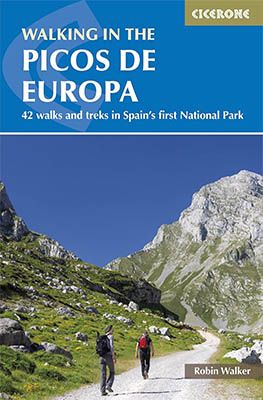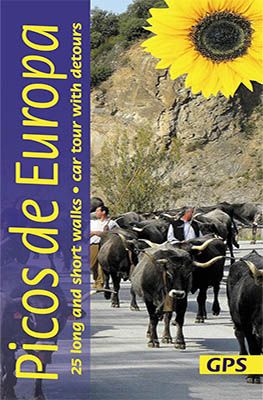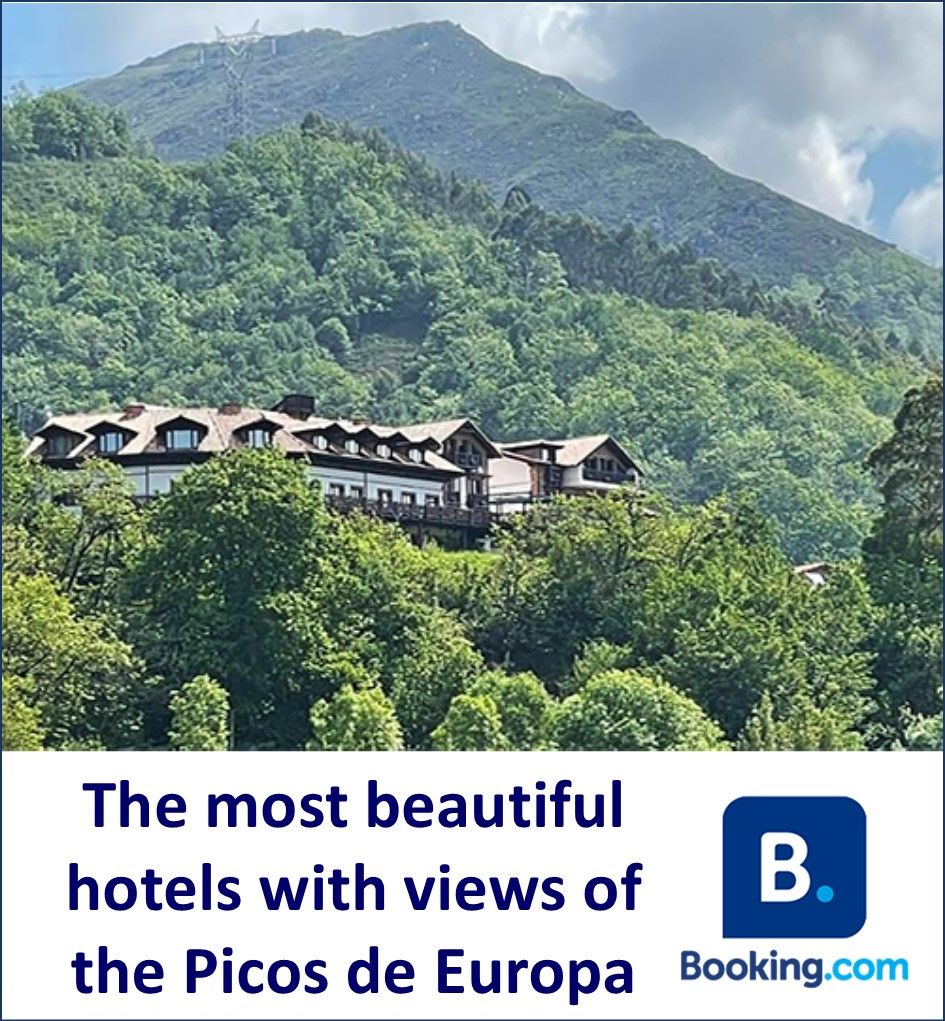The Picos de Europa National Park forms one of Spain’s most impressive mountain ranges. This rugged natural area stretches across the regions of Asturias, Cantabria and Castile and León. With towering mountain peaks, limestone rocks, deep gorges and rich flora and fauna, this is the perfect destination for hikers and nature lovers. Here you can enjoy breathtaking vistas, centuries-old villages and unparalleled tranquillity. The most famous hiking route in Picos de Europa is the Ruta del Cares. But there are also other hiking opportunities along ravines and cliffs and through charming villages. We wanted to discover them during a multi-day hike. Unfortunately, that adventure unfolded differently than expected.
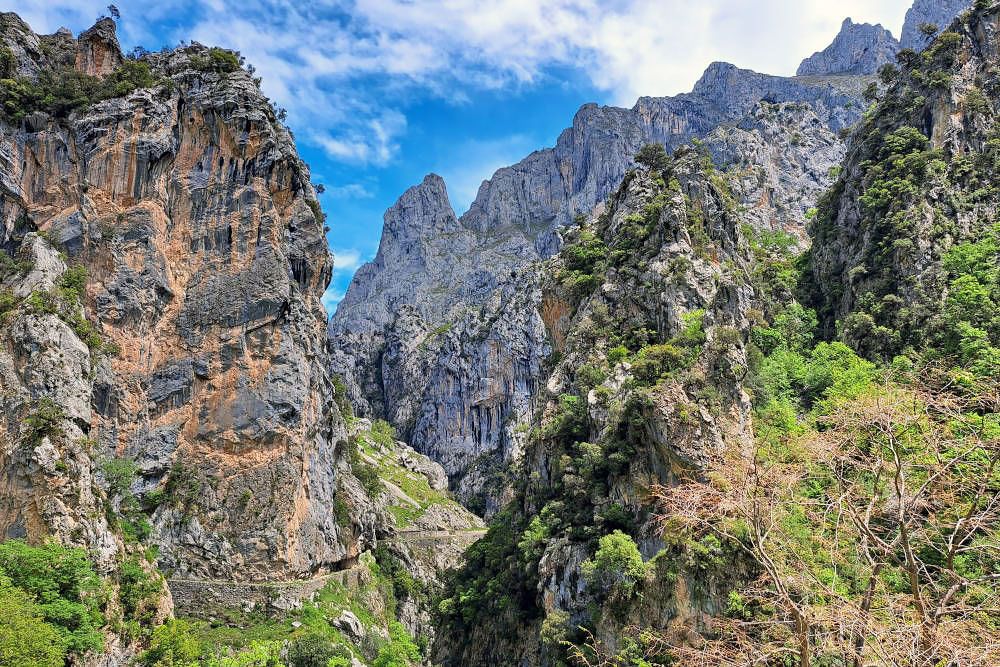
Picos de Europa: Rugged and natural
Picos de Europa is part of the larger Cantabrian Mountains, which stretch along the northern coast of Spain. The mountain range itself is not gigantic, but the variety in landscapes and the differences in altitude are enormous. The highest peak, Torre de Cerredo, towers above the rest at 2,648 metres. This area owes its name to the sailors who, when returning from their voyages, saw the first signs of the European mainland in this mountain range. The area is now primarily known for its unparalleled natural beauty and varied ecosystems.
Picos de Europa was declared Spain’s first national park in 1918. Over the years, the area has become popular among mountaineers, birdwatchers and hikers from all over the world. What makes it extra special is the biodiversity. You can find chamois, griffon vultures, wolves and even the rare Cantabrian brown bear. There’s also much to discover botanically, from wild orchids to rare alpine plants.
However, the weather in the Picos de Europa can be treacherous. Despite its location in relatively warm Spain, weather conditions can change quickly, especially at high altitudes. The proximity to the Bay of Biscay can also cause frequent rainfall. In summer, temperatures in the valleys can rise, while it’s still cold and windy above. Good preparation is therefore essential if you want to explore this area. In our blog about hiking in the mountains, we give you various tips to start your hiking adventures well-prepared.
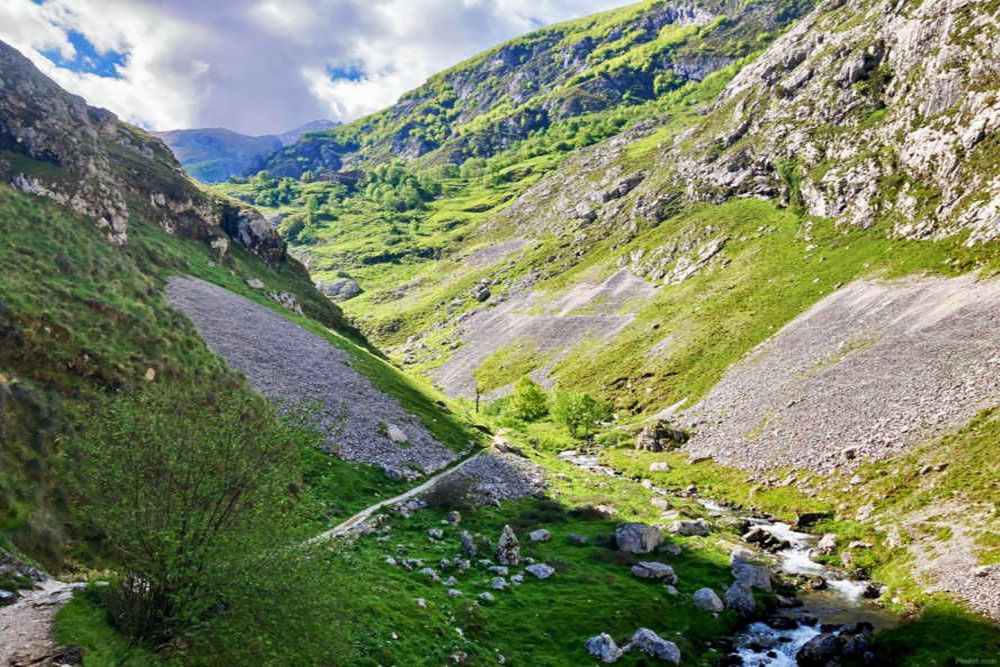
Picturesque villages in the Picos de Europa
Besides the beautiful nature, Picos de Europa also has several charming villages and hamlets that are well worth a visit. These villages exude the atmosphere of bygone times and offer an authentic glimpse into mountain life.
Arenas de Cabrales
Arenas de Cabrales is famous for its eponymous cheese, Cabrales: a strong blue cheese that is matured in caves. The village lies at the foot of the mountains and offers a beautiful view of the surrounding peaks. It’s a perfect place to enjoy local specialities and get an idea of traditional life in this region.
Sotres
Sotres is one of the highest villages in the Picos de Europa and offers an unparalleled view of the mountains. This village is small but exudes authenticity. The houses are traditionally built with natural stone and it seems as if time has stood still here. For hikers who want to explore the northern part of the park, Sotres is an excellent starting point.
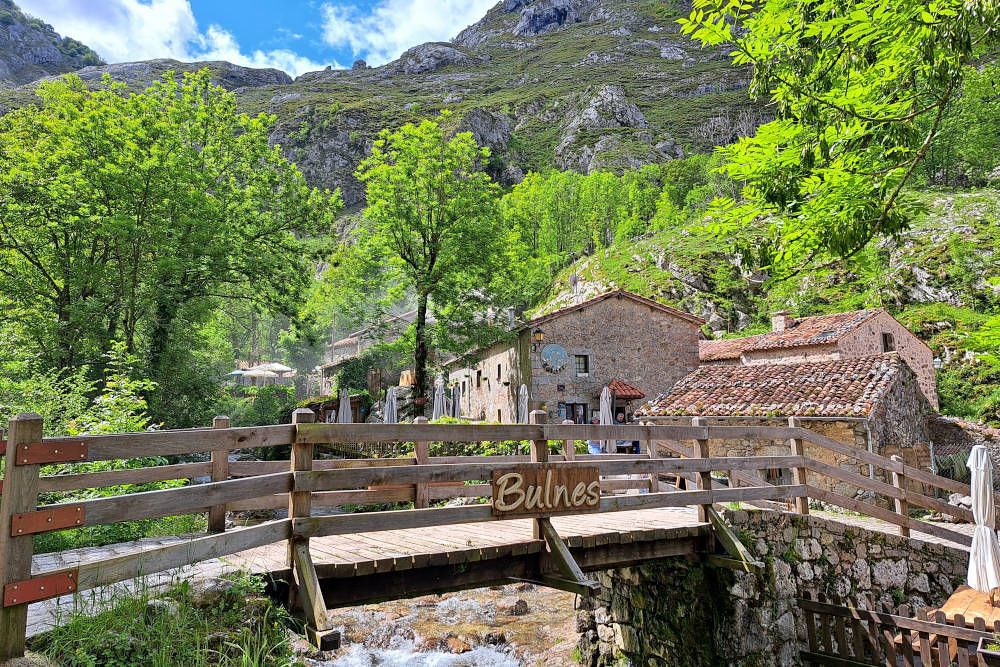
Bulnes
Bulnes is a special village because for a long time it was only accessible via a steep footpath or by donkey. Nowadays there’s a cable car, but many people still choose to go to this charming hamlet on foot. The village is small with only a handful of houses and some cosy restaurants. The view from almost every spot in the village is impressive. From Bulnes, you can also make beautiful hikes, for example to the top of the famous mountain Naranjo de Bulnes.
Poncebos
Poncebos is a small village that is often seen as the gateway to some of the most beautiful hiking routes in the Picos de Europa. It’s located in the Asturias region, on the banks of the Cares River, and serves as the starting point for the famous Ruta del Cares. The village itself is very small and has no extensive facilities, but that’s precisely what gives it an authentic charm.
Caín
Caín is a small and remote mountain village in the province of León, in the heart of the Picos de Europa. The village is located at the beginning or end of the famous Ruta del Cares. This makes Caín a popular destination for hikers who are about to make or have just completed the spectacular gorge route. Everywhere you meet sporty types who are having a drink somewhere and telling great stories about their experiences. Caín offers a beautiful view of the imposing rock faces and the rugged landscape that characterises the Picos de Europa.
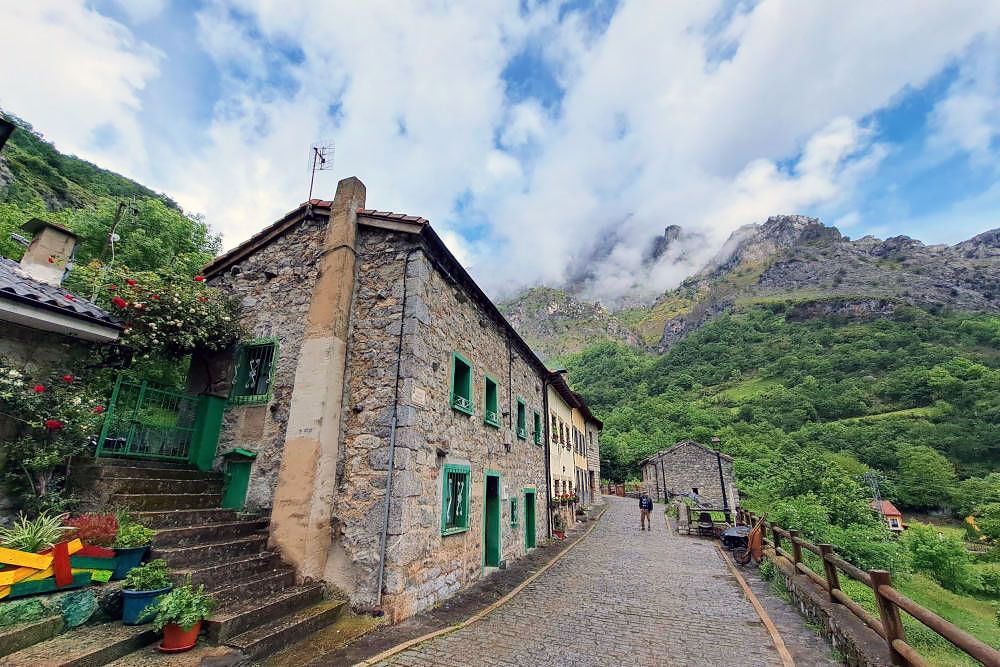
Our hiking adventure in Picos de Europa
One of the biggest attractions of Picos de Europa are the unparalleled hiking opportunities. When we saw the impressive photos of friends, we knew one thing for certain: we want to discover this hiking area! We booked a multi-day hut tour, which also includes the Ruta del Cares in the schedule.
The first hiking day in Picos de Europa
We depart from the cosy Hotel El Tombo in the hamlet of Cordiñanes de Valdeón. Soon we pass Mirador del Tombo, a statue of a chamois looking at the overwhelming mountain peaks. We meander through the valley, with the Cares River always close by. A while later we reach Caín. Here my wife buys a beautiful wooden walking stick from an old man for just one euro. Handmade, we understand.
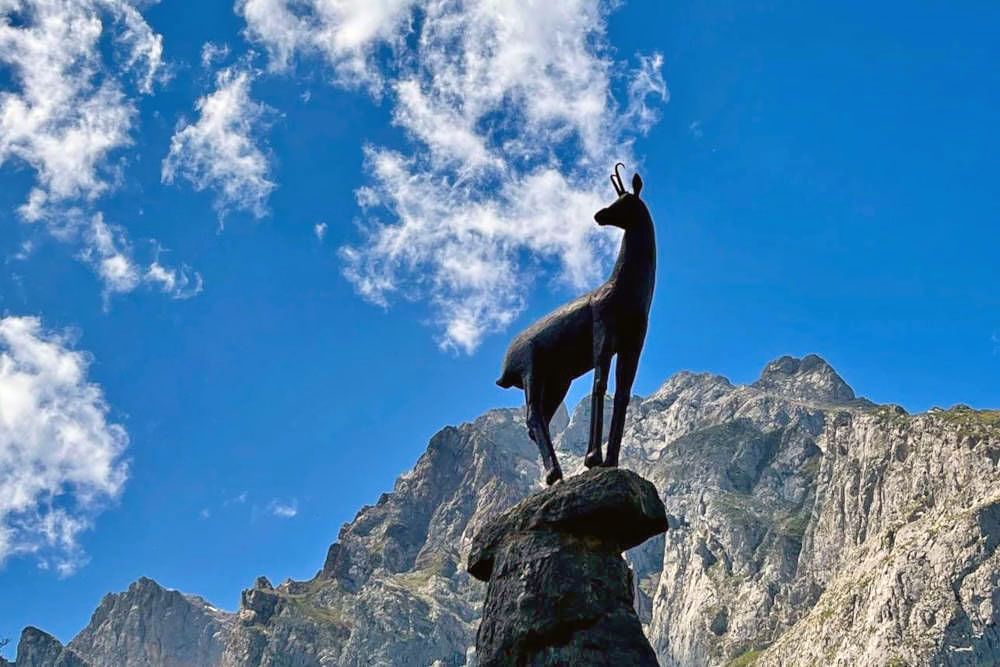
Ruta del Cares, a spectacular hiking route
From Caín, we begin one of the most famous and impressive hiking routes in Picos de Europa. The Ruta del Cares follows the course of the Cares River through a deep gorge between the mountains and offers breathtaking views of the surrounding peaks and the crystal-clear water below. The Ruta del Cares was originally constructed in the early 20th century to provide access to a water channel that supplied energy to the villages in the region.
Nowadays, it’s one of the most popular hiking trails in Spain. The path winds along the cliffs and deep valleys. The view is spectacular at every point. It’s a relatively easy hike, the differences in altitude are limited and the path is easily passable. No climbing over boulders or large stones. This makes the Ruta del Cares suitable for most hikers.
We had imagined a very narrow path, winding high above the valley. Blessed with a less good sense of balance and fear of heights, I was worried beforehand. Fortunately, this was not necessary. The path is wide enough to walk without fear. Oncoming hikers can easily pass each other without having to perform neck-breaking stunts.
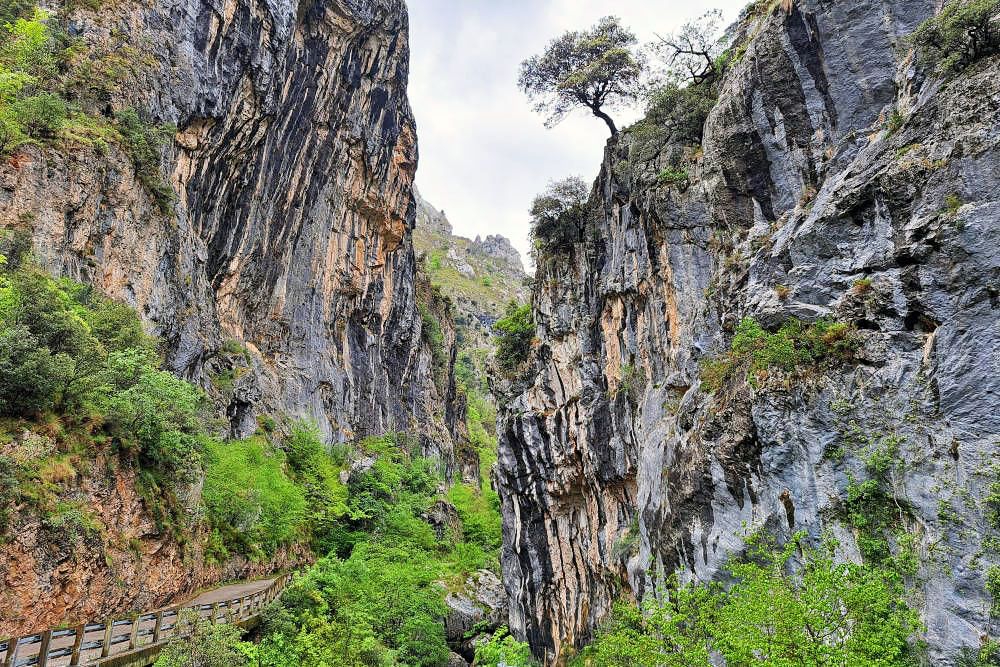
Impressive sights along the Ruta del Cares
Along the way on the Ruta del Cares, we pass several impressive sights. For example, we walk through tunnels carved into the rocks on certain parts of the route. Ideal to protect ourselves from the sun that is shining benevolently at that moment. We also cross the Cares via a narrow bridge that spans the gorge.
At every turn, the view is different. Each time, nature seems to be even more imposing and impressive. We can’t get enough of it and take one photo after another. How beautiful it is here! Unfortunately, the weather changes, the sun disappears, the wind increases and the first drops fall. We’ve put the rain covers on the backpacks and rain gear on just in time. Luckily, it’s only a short distance to Poncebos, where we’ll spend the night.
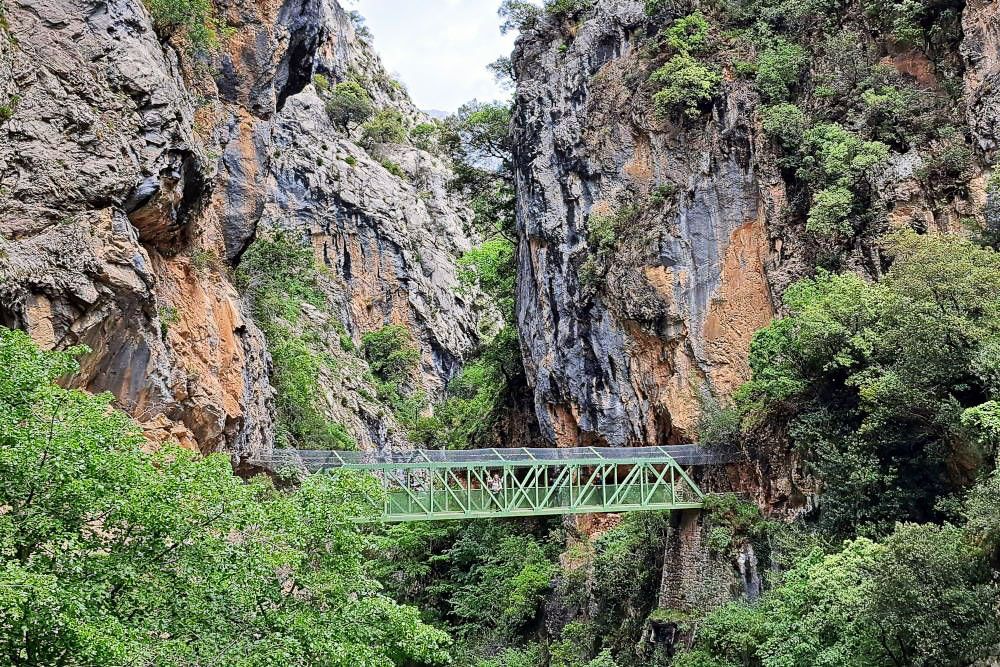
The second hiking day in Picos de Europa
From Poncebos, we walk the hiking route to Bulnes. That means climbing about 400 metres in altitude. After about an hour and a half, we reach this nice village. Just before we enter Bulnes, we see the mountain station of the cable car. Since 2001, tourists have been able to go up much more easily from Poncebos.
In Bulnes, we have lunch at an albergo. The hamlet is not large, but very photogenic. It’s as if it’s stuck to the mountains. The hike to our mountain hut is difficult for me. Three times we have to cross a fast-flowing river. I try to cross dry via some wobbly stones in the water. Each time it goes wrong and I end up with soaking wet feet. Later we walk over slightly ascending open terrain. That’s better, until it starts raining here too.
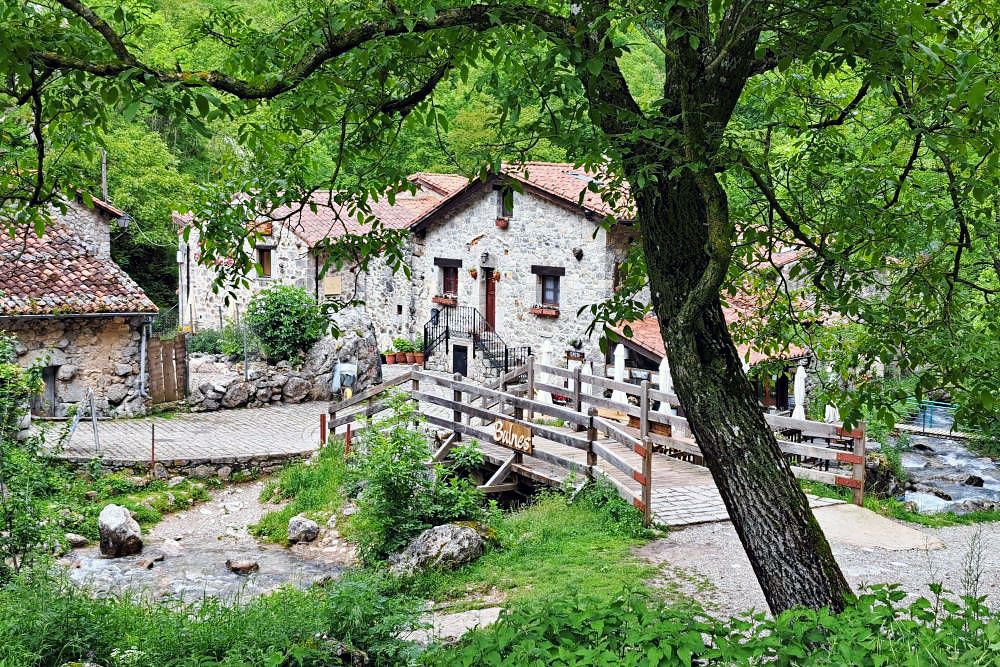
When we reach the hut, we notice that it’s closed. An older Spanish man a bit further gives us little hope. When he hears us speaking Dutch, he suddenly answers in juicy Flemish: “Come in and dry off at my place, but take your shoes off because I’ve just cleaned the house”. He turns out to have been born in this house, but moved to Belgium with his parents at the age of 12. Coincidentally, he returned to his parental home this morning to enjoy nature for a few days.
After waiting for about two hours in the Spaniard’s house, two men with backpacks approach the mountain hut. It turns out that they have been sent by the owner to receive us. We don’t have to sleep in our saviour’s barn after all!
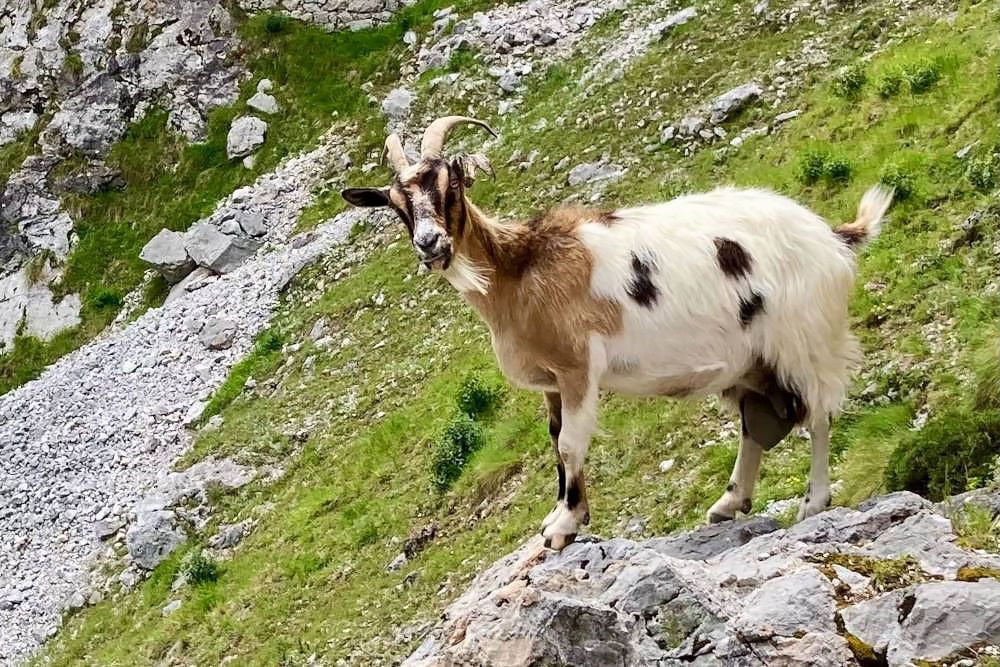
The third day in Picos de Europa
After a very meagre breakfast in the mountain hut (two pieces of old baguette, some Maria biscuits and a small pot of jam), we set off. Today’s route leads to Caín, largely over the same path as the day before. I manage the river crossing twice better this time, but the third time I lose my balance again. Fortunately, the sun is shining and the clothes dry quickly. In Bulnes, we indulge in a hearty lunch. We enjoy local specialities in the lovely sunshine. With full stomachs, we begin our continuation.
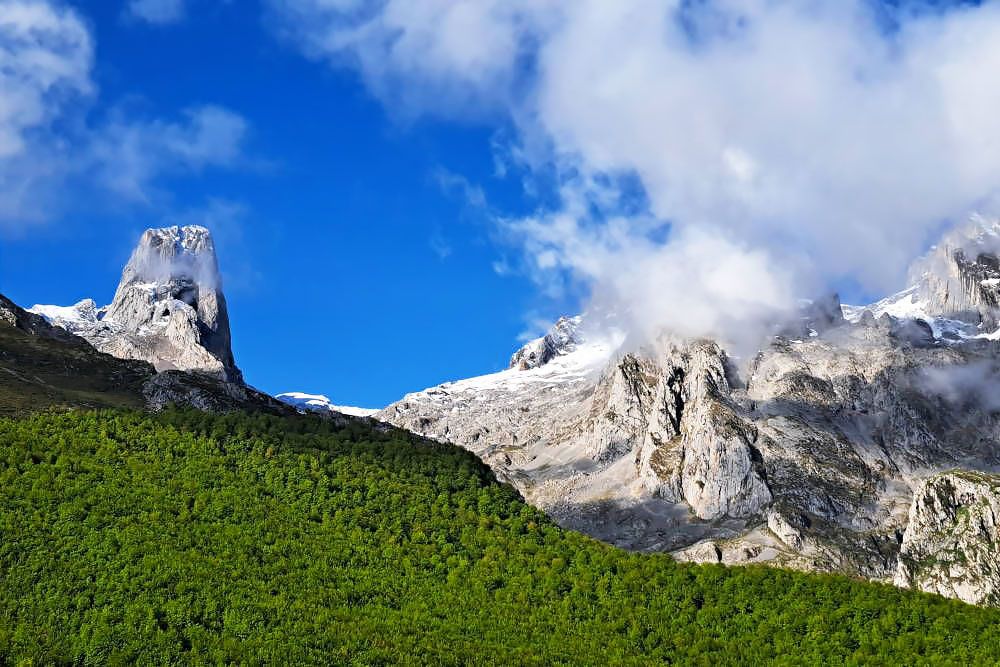
We walked large parts of the route yesterday as well. Now that we’re walking in the opposite direction, we notice many new things. The Ruta del Cares is just as beautiful from the other side. It helps that it’s brilliant weather all day.
In Caín, we stay overnight at La Casona de Palmira. A cosy hotel where we enjoy a delicious dinner in the evening. Unfortunately, the enjoyment is short-lived: my wife becomes quite ill. Further walking is really impossible, as she has no energy left. This means an early end to our hiking adventure in Picos de Europa. The next day, a taxi takes us back to Hotel El Tombo. We hang around there for a while. The day after, my wife has recovered quite well, but hiking is out of the question. Thus, our hiking trip ends sooner than planned. A shame, because the views were incomparable.
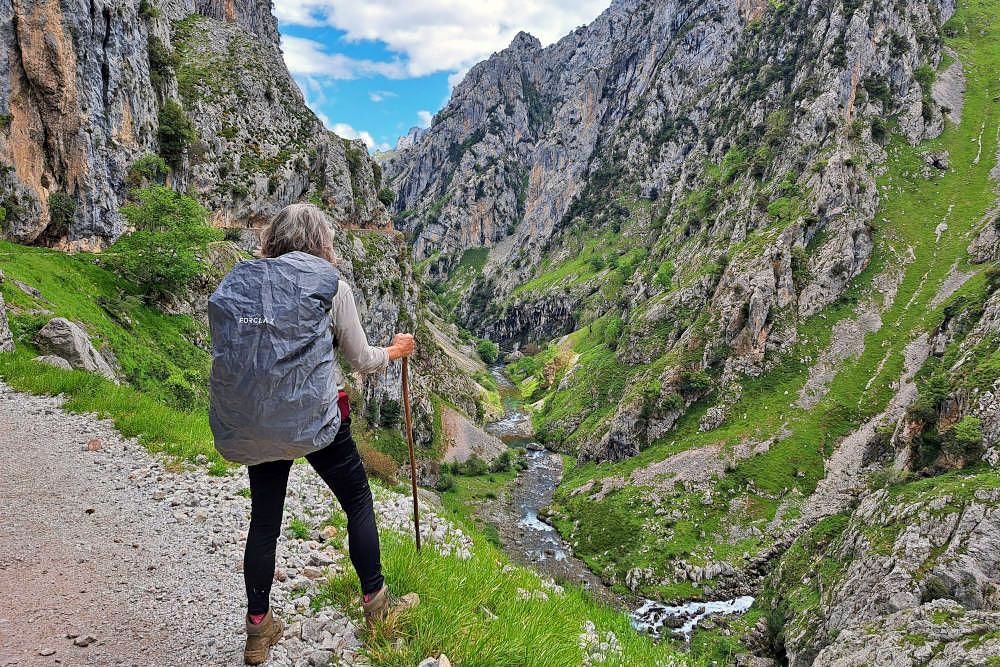
Other hiking routes in Picos de Europa
Besides the Ruta del Cares, there are numerous other beautiful hiking routes that wind through Picos de Europa. Here are some routes you shouldn’t miss:
Lagos de Covadonga
This hike takes you to the famous lakes of Covadonga, one of the most picturesque spots in Picos de Europa. The route starts in the pilgrimage site of Covadonga, where you can visit the basilica and the Santa Cueva, a holy cave. From there, you can hike further to the lakes Enol and Ercina. The hike is not too strenuous, but the view of the mountains reflecting in the lakes is unforgettable.
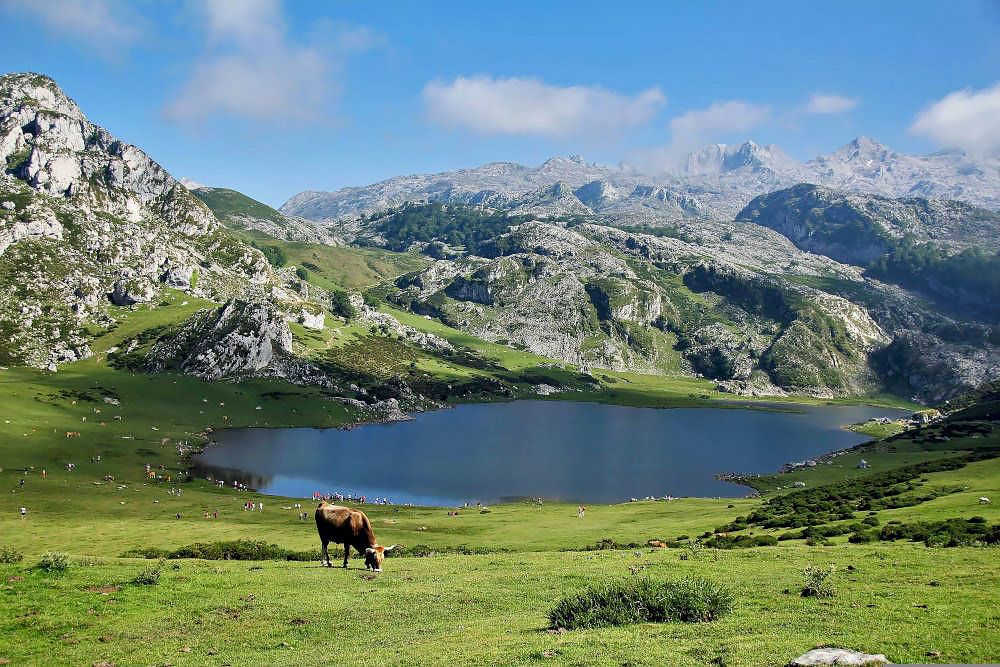
The Vega de Urriellu route
For more experienced hikers, the trek to Vega de Urriellu is an absolute must. This path takes you to the foot of Naranjo de Bulnes, one of the iconic mountains of Picos de Europa. The trek is challenging and the path ascends considerably, but the reward is a spectacular view of the imposing limestone peaks. The route takes about six to seven hours, depending on your starting point and fitness level.
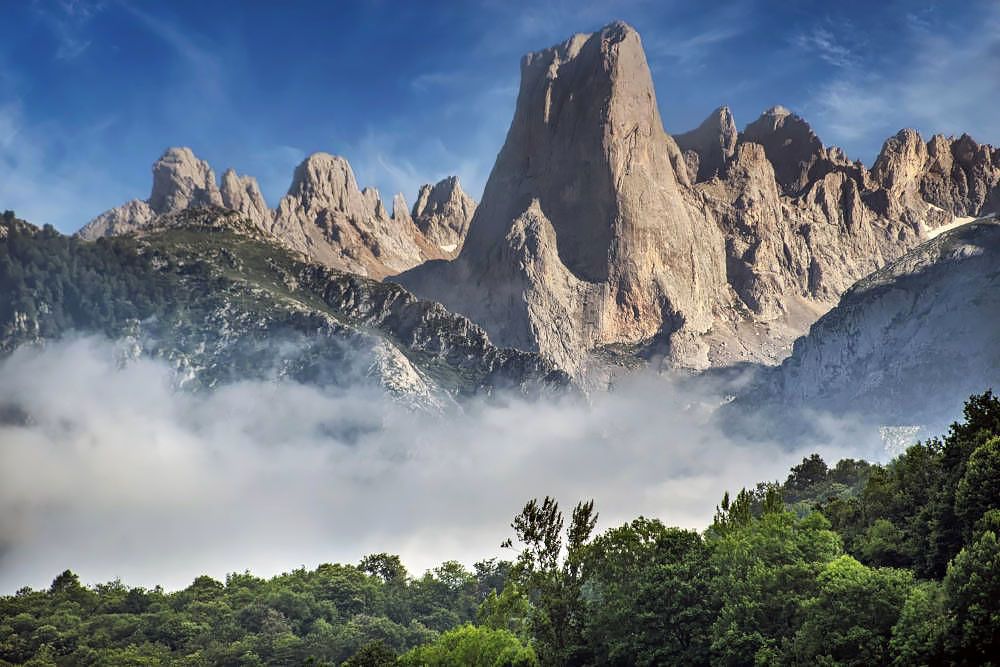
Picos de Europa National Park offers an unforgettable combination of spectacular nature, charming villages and endless hiking possibilities. Whether you choose the famous Ruta del Cares or the serene lakes of Covadonga, every step in these mountains brings you closer to nature. Put on your hiking boots, breathe in the fresh mountain air and let yourself be carried away by this special part of Spain.
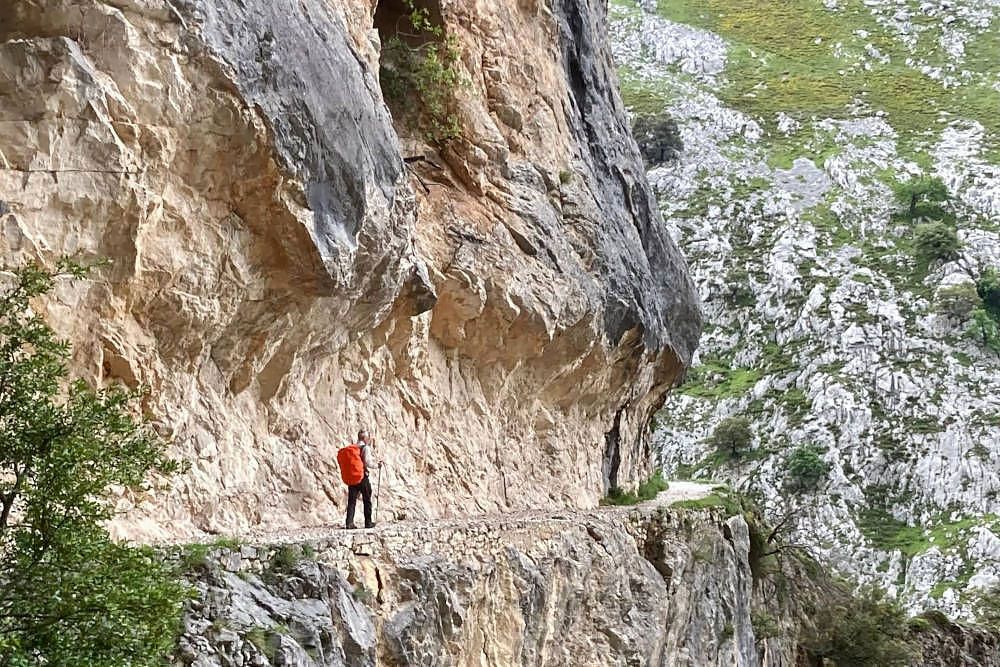
FAQs about Picos de Europa
Picos de Europa is located in northern Spain, spread across the regions of Asturias, Cantabria and Castile and León.
It's really only possible to reach the area by car. We drove via Bilbao. After leaving the motorway, we were still on the road for a long time. The road wound through the mountains, resulting in a low average speed. Additionally, there were roadworks that meant traffic could only use one lane. Count on at least two hours of travel time from the motorway to Corndinanes de Valdeon.
The nearest airport is in Bilbao. Here you can rent a car for the journey to Picos de Europa.
Well-known hikes include the Cares Gorge (Ruta del Cares), the hike to Naranjo de Bulnes, and the route to the lakes of Covadonga.
There are various options, from mountain huts to hotels and B&Bs in villages such as Cain, Poncebos, Sotros, Potes, Arenas de Cabrales and Cangas de Onís.
We stayed at:
- Hostal El Tombo in Cordinanes del Valdeon. Simple but good room with private bathroom. Excellent meal and hearty breakfast. We were given an extensive packed lunch.
- Hotel Mirador de Cabrales in Poncebos. Large hotel, good room and a delicious dinner. We also received a substantial lunchbox at this hotel.
- Refuge Terenosa. Not recommended. Closed upon arrival, staff eventually came walking from the mountains after hours of waiting. Mediocre dinner with small portions, a severely inadequate breakfast and hardly any facilities.
- La Casona de Palmira in Caín. Nice and cosy hotel. Had a delicious dinner, but afterwards my wife became quite ill. Was it the food? The owner and his wife did offer all support to help her recover.
This is an overview of all accommodations in Picos de Europa.
The difficulty varies. Some hikes, like the Ruta del Cares, are reasonably accessible, while other routes can be steep and challenging. Also take into account the weather, which can change quickly in this region. There can be regular (heavy) rainfall.
The best travel time is from May to October, when the weather is mild and most hiking routes are accessible. It can be busier in summer. Keep in mind that it can be quite chilly in Picos de Europa by the end of September. Precipitation can fall in Picos de Europa all year round. Even in summer, good protection against rain is a must.
Yes, that's possible. There are various travel organisations that offer multi-day hiking holidays in the area.

